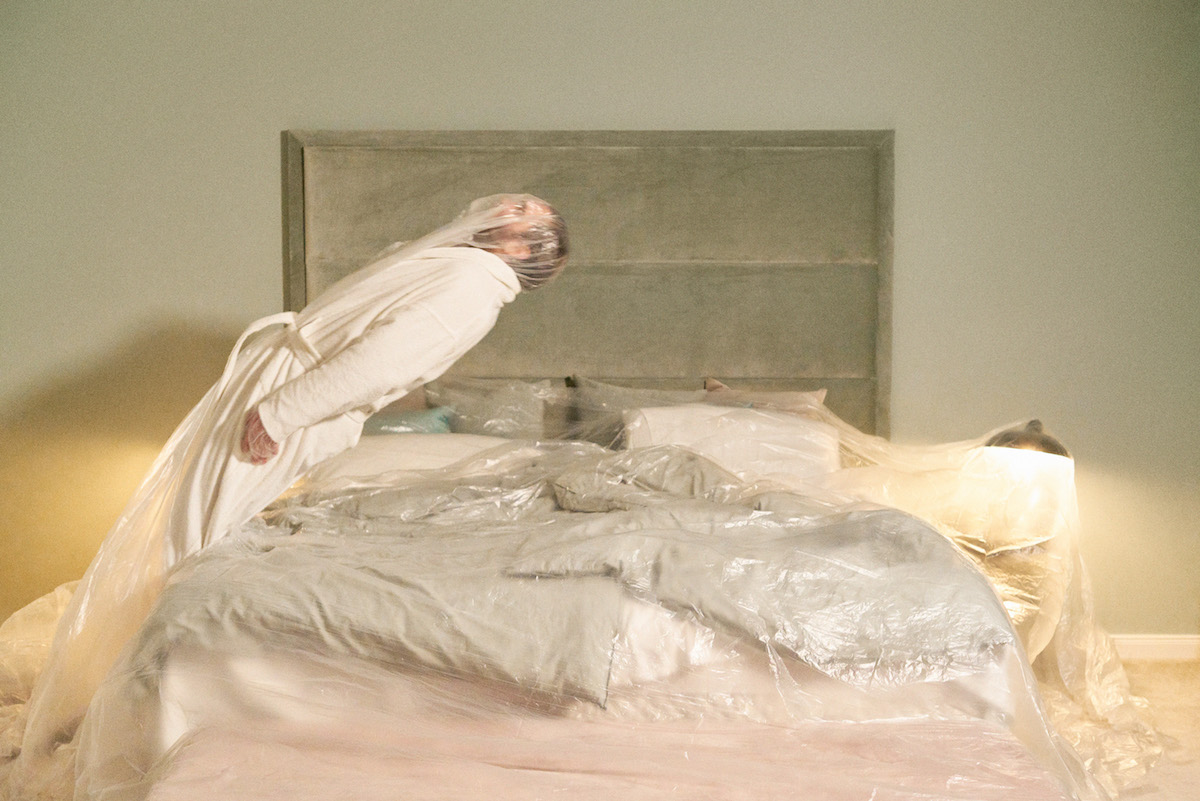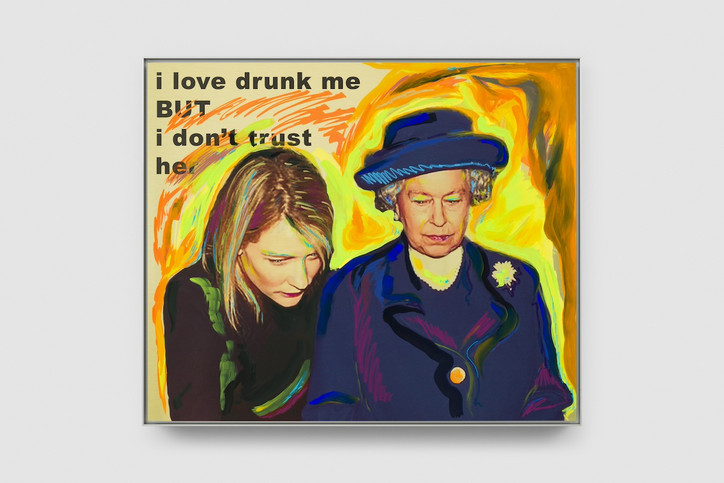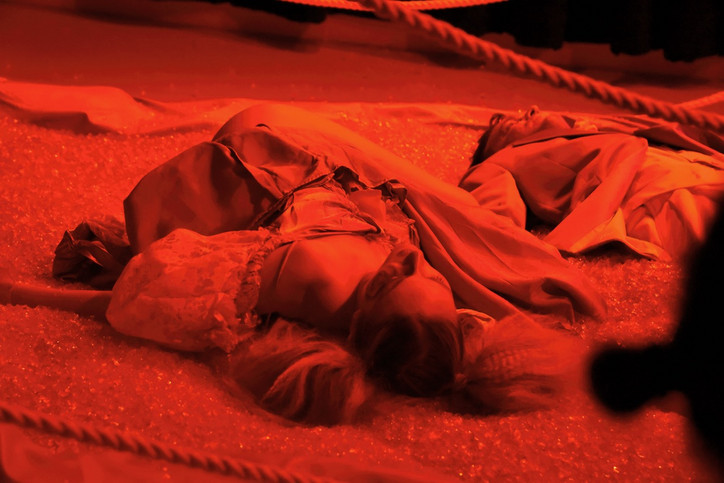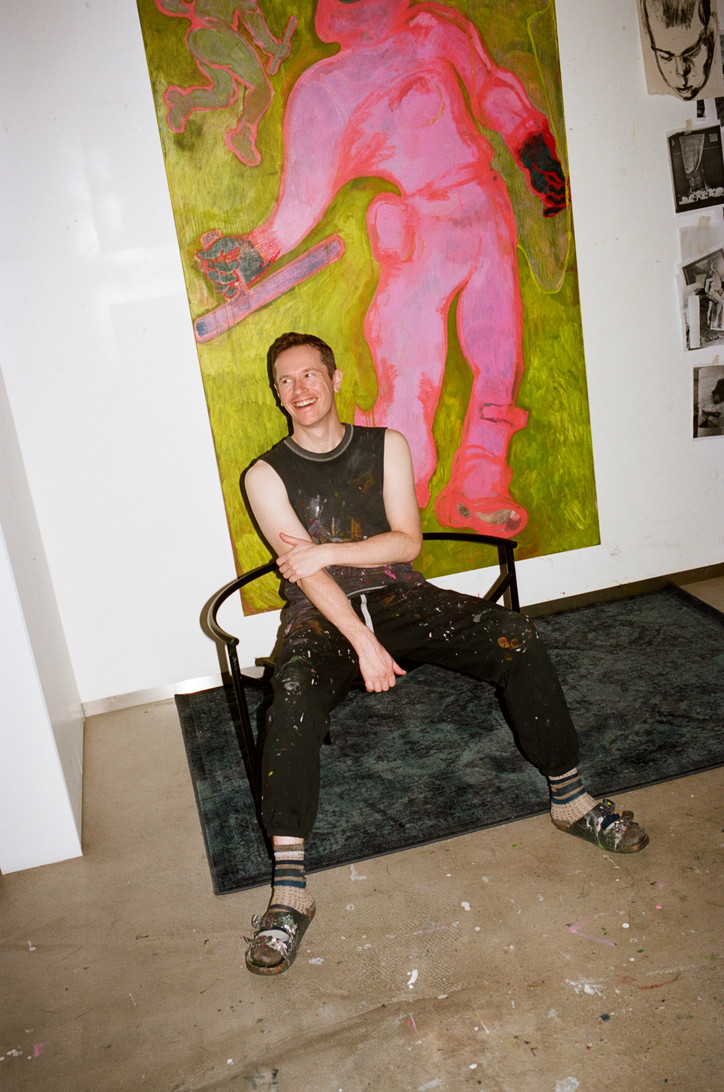Stored

The series produces an eerie prediction for what's to come. "A day in summer 2020. Social isolation has become normal. The new disease is called hypochondria," says Roché.
Check out the rest of the series below.
Stay informed on our latest news!

The series produces an eerie prediction for what's to come. "A day in summer 2020. Social isolation has become normal. The new disease is called hypochondria," says Roché.
Check out the rest of the series below.














Urban Dictionary defines “White Girl Wasted” as “the phenomenon which occurs when a person consumes too much alcohol and proceeds to embarrass themselves and their friends for however long they remain conscious.” You know it when you see it: the dancing, yelling, singing, fighting, crying. It’s a tale as old as time — or at least as old as tabloids and celebrity gossip blogs. Celebrity scandals are cash cows for mainstream media outlets, capitalizing off the ugliest moments in an otherwise carefully architected Hollywood landscape. Ultimately, the media needs young starlets committing acts of self-destruction for their own publicity and revenue. Simultaneously, the star benefits from the attention too.
In Cara Benedetto’s solo exhibition WGW at Rose Easton Gallery in London, she explores the construction of white femininity and victimhood, critiquing what society thinks women in power should look like. Instead of portraying Elizabeth I herself, Benedetto depicts a polished Margot Robbie side by side with herself as the character, with the caption “OMG TINA!!!” Similarly displayed is Kristen Stewart, doubled as the late Princess Diana with her signature closed mouth smile and baby doe eyes. The facial features of Stewart reveals a yearning, one that mirrored Diana’s throughout her time as the Princess of Wales, signaling someone to save her from the circumstances and her own personal self-inflicted hell. Through her depiction of chastised historical figures and the celebrity actresses that portrayed them, Benedetto illustrates even the most privileged woman can’t help but self-destruct — but when they do, their appearances afford them a level of grace denied to most. They are vindicated by the spectacle of their spiral, because we choose to be front row viewers of the trainwrecks we can’t look away from.


In a PowerPoint video titled Hill and Lizzy @ Kegger, Hillary Clinton asks Queen Elizabeth if ‘she’s seen her bong?’ Benedetto at first, seems to be making a more tongue-in-cheek pass at the two. She subtly critiques the brashness of the subjects, yet treads towards a more nonchalant response satirizing a neo-feminist or “girl boss” take. Perhaps in 2016, at the peak of Women’s Marches and Trump protests, Benedetto would have had an explicitly critical response to these women in power through a more preachy form of captioning and symbolism. However, the paintings are indicative of changing socio-political stances and a feminist rejection of a monotonous political climate.
Benedetto neatly intertwines both an unattached and critical worldview within her work, presenting these truths for what they really are without feeling moralizing or singling out viewers. Instead she displays the indexicality of the current time period through witty details and symptoms of a generation coping with perpetual and deliberate melancholy. Labeled the Fleabag Effect, the last decade has seen a gradual shift among millennials and Gen z adopting a more dissociative attitude towards their own suffering and romanticizing self destruction as a form of coping with both external and internal triggers. It’s no coincidence that books such as Otessa Moshfegh’s My Year of Rest and Relaxation and Didion’s Play it as it Lays have dominated the literary spotlight amongst Gen Z readers. Both characters choose to self-sabotage within the enclave of comfort, monetary stability, and whiteness, despite having the resources to thrive. At times it feels illogical that we keep reading these stories and spotlighting these women, even as more dire global issues continue to compete for media attention.


In the simplest justification, and in true Fleabag fashion, it’s fun to check out from the pressures of the world, especially if you inherently hold the privilege to do so. People love these stories about this type of woman as a way to live vicariously through someone whose conventional beauty and status allows them to suffer virtually no consequences. They will continue to live a life of relative ease as long as the mess they create while doing it toes certain social and legal lines. People will choose to read about a girl walking around New York in Prada ballet flats, defecating in the foyer of an art gallery she used to work at because she got fired. This doesn’t mean she should be used as the beacon of morality and fairness, but who doesn’t enjoy imagining a life spent following all of one’s worst impulses?
WGW is on view at Rose Easton Gallery until June 15, 2024.

Robert Greene, the author of The 48 Laws of Power once said that power is an invisible realm that envelopes society, where people continually battle each other though no one is trained to talk about it. Only when you make mistakes do you realize how political people are.
The rules of the game are simple, a referee in a fetish mask (Joshua Weidenmiller) exclaims to the crowd. Please. Don’t. Hurt. Me. Borrowing lines from Brache’s poems, the actors’ fragmented dialogues are a jarring display of cognitive dissonance in a three tableau narrative involving sports, the psyche, and polite society. The opponents, named Nothing Girl and Mary Magdalene, face each other in front of the nation’s flag, topping each other from the bottom, moving in-sync, writhing in a pool of red gelatin. The audience laughs, not knowing what to expect next. In the second scene, Josh plays an analyst examining Betsey in a lounge chair, an element of Jungian and Freudian influence on the night’s inquiries. Among those inquiries, the show’s co-directors probe into America’s obsession with the masking of oneself in order to survive and exist in reality; the juxtaposition of constraint and consequence deeply embedded in our daily roles.


“Sports mirror the facade of contemporary life,” Sigrid describes her and Brache’s vision for the evening, or poetry in motion, as she calls it. “We’re expected to perform, constantly pitted against one another within the capitalist machine under the scrutiny of a faceless judge.” One summary of the show could be more or less a marriage of central ideas revolving around interdependence, the unconscious, and PsychologyToday.com.


The third act ends with a play off of a prom scene, a celebratory tradition rooted in gendered competition and peer judgments. It would make sense that the use of Jell-O also holds origins as a 20th century symbol of another American invention—specifically aspic, molded vessels that once encapsulated long hours of domestic female labor as privileged entertainment. Inspired by the fetish magazine Blushes, Brache’s book cover depicts an AI-generated image of a mannequin-like woman with a man pouring water over her legs, imbued with an idyllic quality aesthetically referencing JCPenney catalogs from the ‘80s and conventional (or otherwise sanitized) notions of beauty.
Victorian era music plays in the background. Nothing Girl pushes Mary forward, who prays on her backside. Why does being sick last so long? She screams. “She’s sick because she’s staring at her reflection,” explains Sigrid. “She’s sick because she is using others, because she has to work too much, or maybe, because the machine is sick."










What is your ideal office?
My current studio but with a sofa, a grand piano and a steam room.
What kind of music do you play while working?
I have playlists for different purposes. When I need energy there's one full of trashy pop music. When I need to get lost I have one called Trance. To be calm and focused I listen to a lot of classical piano. Sometimes I get stuck on one artist for days; recently it was Weyes Blood, then Aphex Twin. Right now I'm listening to a lot of Unsuk Chin.
Who has been an unexpected source of inspiration for you?
Jusepe de Ribera. His Apollo and Marsyas are currently on loan to the Louvre from the Capodimonte. I've been to see it three times.
Do you believe in ghosts?
Only at 3am.
What was the last thing you took a picture of?
My boyfriend next to a drinking fountain in Rome.
Where in the world do you feel the most creative?
In my studio.
If you were a sound, what would you be?
A drunk trying to sing Elvis.
How do you approach a blank canvas?
With impatience. A blank canvas is a beautiful thing that I can't wait to defile.
Is there a childhood memory that sticks with you?
So many, here's a few: trying to do a Liverpool accent to amuse myself while cross country running. Locking myself in the bathroom at my seventh birthday party so I could draw in my new sketchbook. Singing at the top of my lungs while waiting for the bus on a country lane.
Fate or free will? Neither of them is enough!